Susan's Blog - New York City Christmas 2016 (Day 3)
We didn't do much this 3rd day in the morning ... the first pictures you'll get are from lunch! This is our pizza-day (another tradition, we always do a pizza day in NYC), so we headed south to Bleeker Street Pizza. Based on the website, it is an authentic Tuscan style thin-crust pizza that has been a family recipe for generations. The owner's grandmother, Nonna Maria, left her birthplace of Tuscany at age 19, bringing with her the family recipe for the pizza. (She always claimed it was the reason why her husband married her!) They had just opened and we got a few slices of their Nonna Maria pizza.
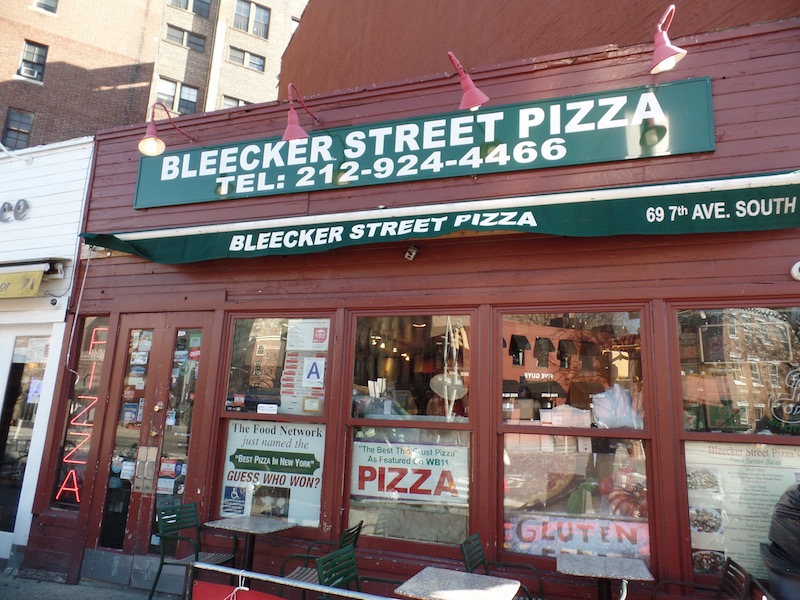
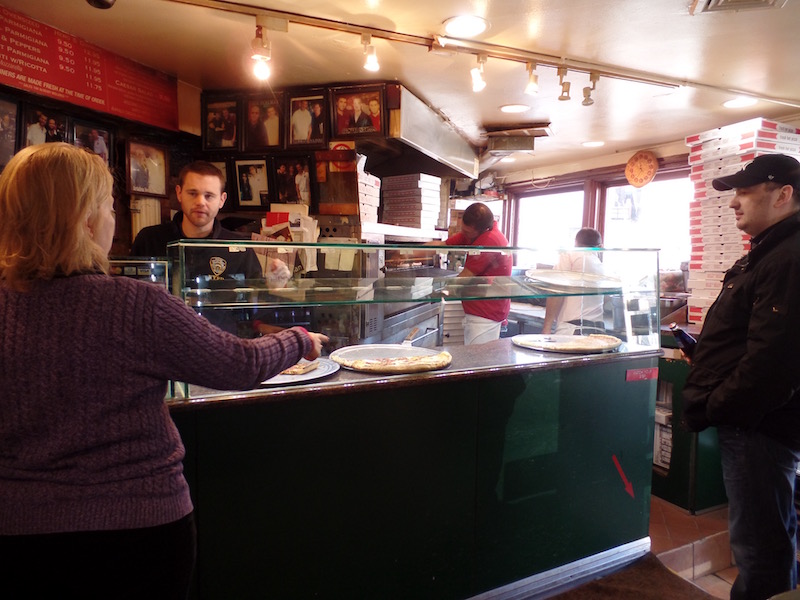
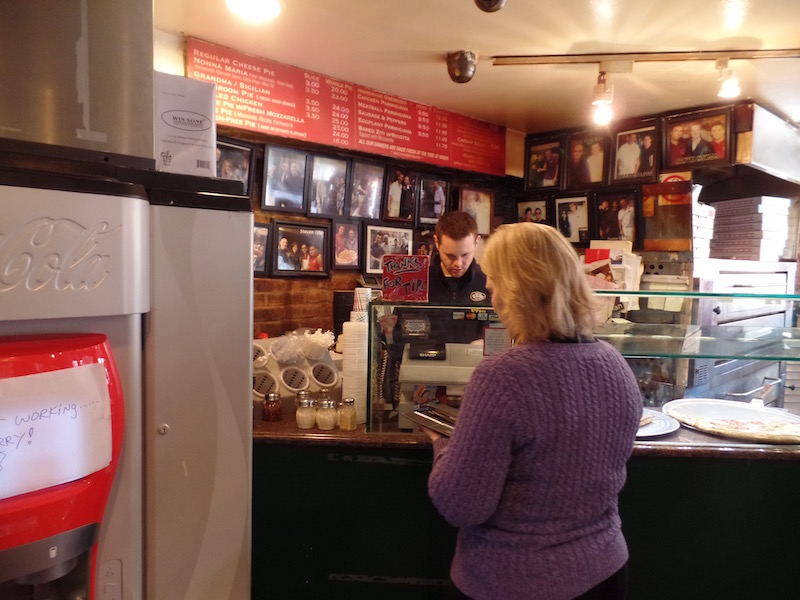
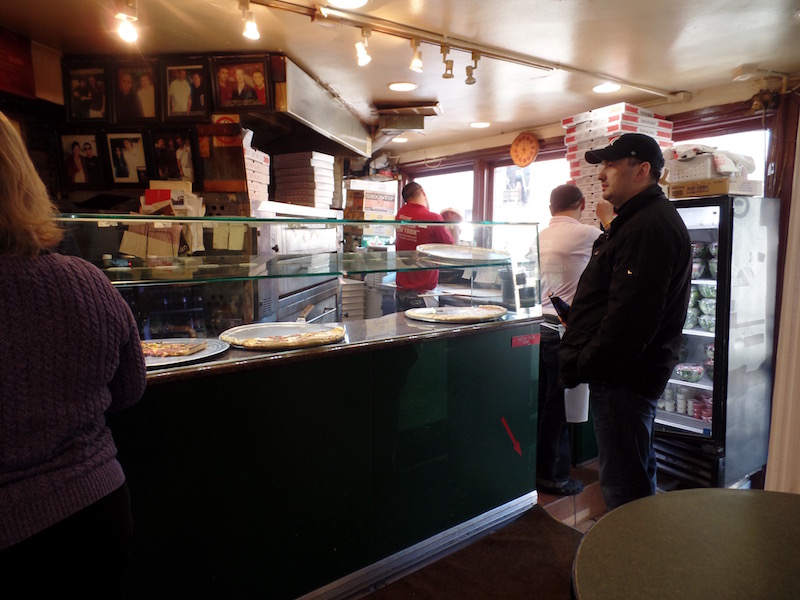
Just up the street is Murray's Cheese. Founded in 1940 by Murray Greenberg, Murray’s is located in Greenwich Village. Murray was a Jewish veteran of the Spanish Civil War who was rumored to be a Communist (rumored only) who built a great reputation for the business. In the 70s, Murray sold the shop to his clerk Louis Tudda, an Italian immigrant from Calabria. In those days, it was a humble butter and eggs shop that had a lot of block cheeses and catered to the little Italian enclave that Bleecker Street was at the time. Rob Kaufelt bought the Murray’s in the early 90s and began traveling the globe, finding new cheeses that no one had ever heard of and bringing them back to the US. We grabbed a small block of 2 different cheeses for our dessert. I must say .. it was a bit of a chore picking which 2 cheeses out of the huge selection!
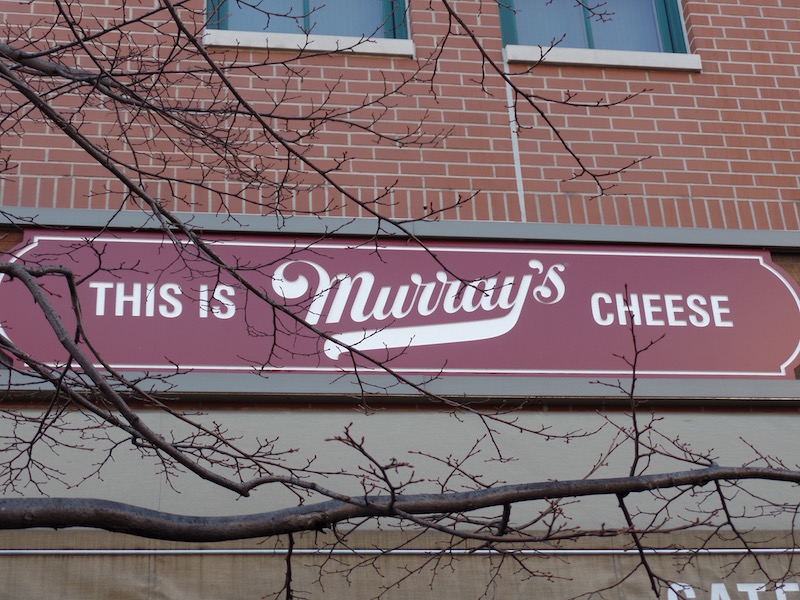
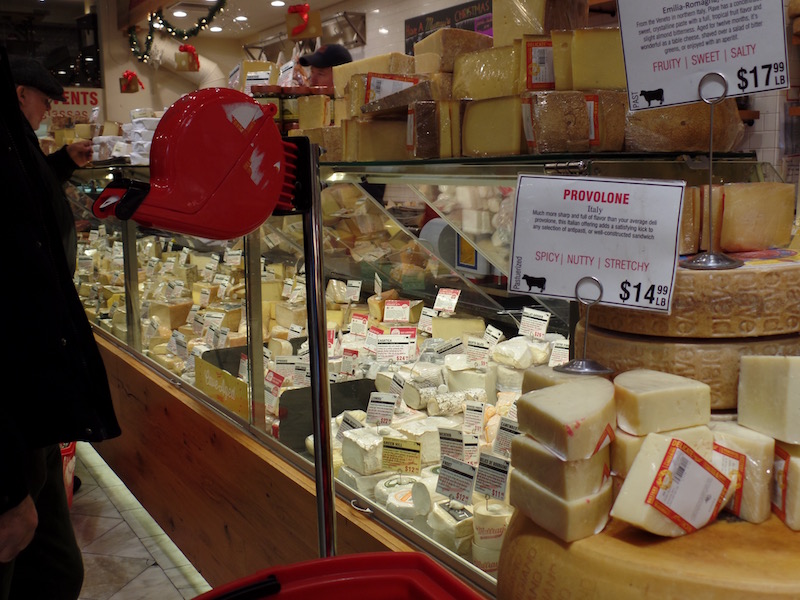
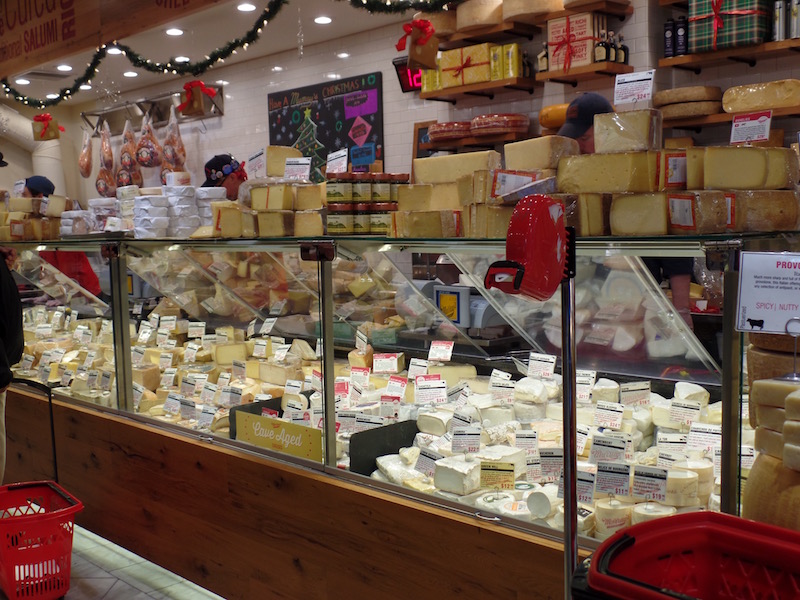
We then started a Greenwich Village walking tour by Big Onion tours (which has become another tradition for us). Greenwich Village, often referred to by locals as simply "the Village", is a neighborhood on the west side of Lower Manhattan. It has been known as an artists' haven, the Bohemian capital, the cradle of the modern LGBT movement, and the East Coast birthplace of both the Beat and '60s counterculture movements. I suspect most artists can't afford to live there anymore since all 4 of the Village zip codes were ranked among the ten most expensive in the United States by median housing price in 2014.
As we started, we went by the Northern Dispensary building. This has an interesting little story. New York City's first dispensary had been established in 1791 in what is now the City Hall area to provide medical care for the poor. In 1824 a group of citizens saw a need for a second dispensary serving residents of what was then the northern part of the city, today known as the West Village and Chelsea. The Northern Dispensary first occupied various rented quarters in the area until 1831 when it erected its own building on a small triangle bounded by what is now Christopher Street and Waverly Place, which splits in two at that point before meeting Christopher. The site was given to the organization by New York City with the restriction that it be used solely as a dispensary. As originally built by Henry Bayard, a carpenter, and John Tucker, a mason, the dispensary was two stories high with a simple cornice. The orange brick building's main architectural features were its anthemion-top fence and its triangular shape, with unusual chamfered corners. Edgar Allan Poe got medicine for a winter cold in 1837. The dispensary refused treatment to AIDS patients in 1986 and, after trouble with New York City's Human Rights Commission, closed in 1989. It has stood empty since then! A provision in the deed dating to the early 19th century requires that the building be used to serve people who are poor and infirm, according to its owners. This has caused a few issues with the owners who want to turn it into condos.
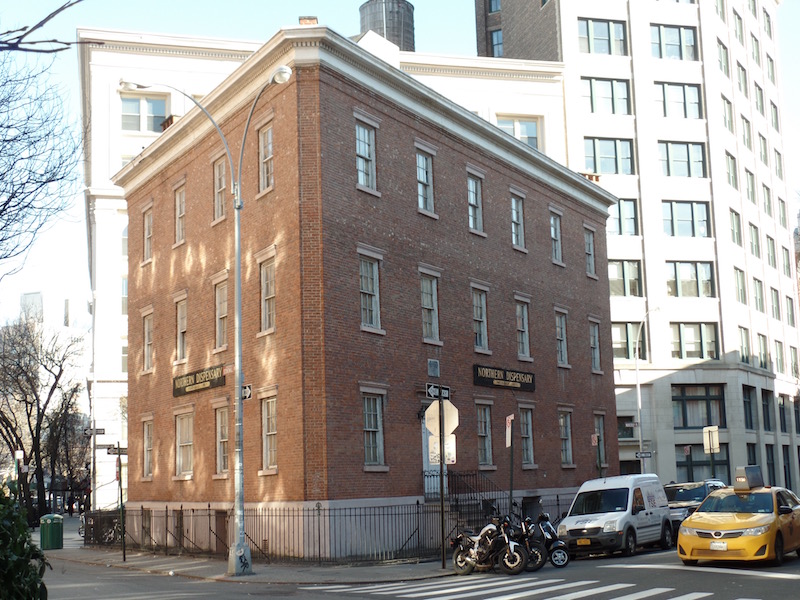
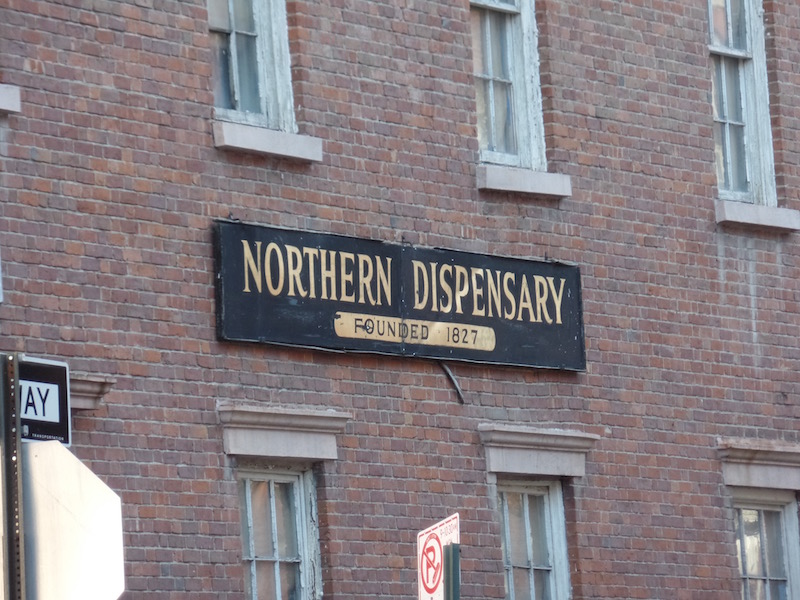
This is called Marie's Crisis Cafe. Marie Marchand (also known as Romany Marie) was a half gypsy and half Jew, born in Nichitoaia (Romania) in 1885. She opened a set of cafes which attracted the core of the Greenwich Village cultural scene. The name "Crisis" came from "The Crisis Papers," by Thomas Paine, who died in the same house)
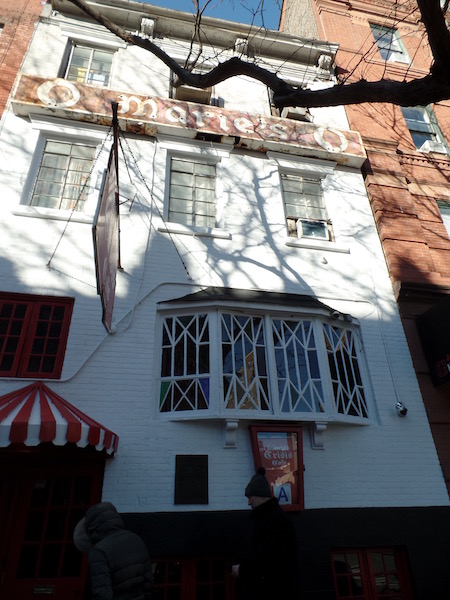
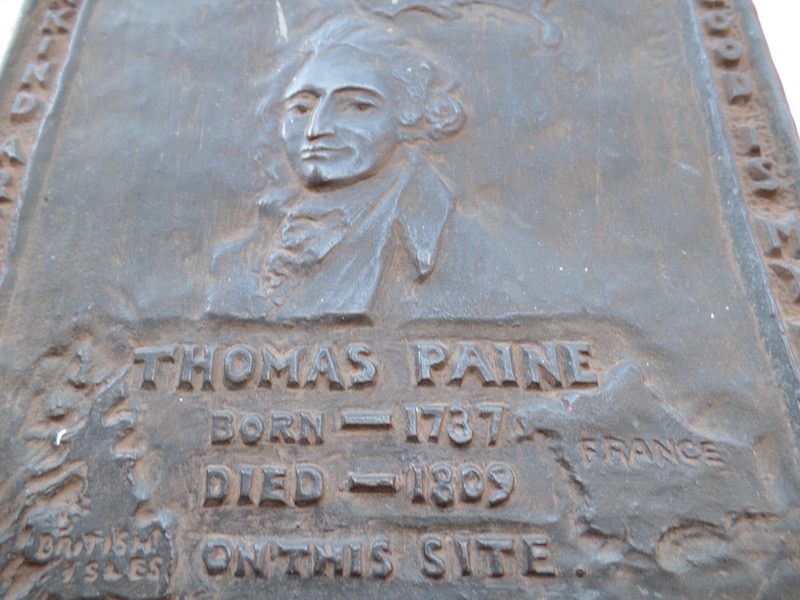
Within this area, you can see two key types of residences: handsome Greek revival rowhouses like in the first picture, and apartment blocks like the second picture. The rowhouses would be for the wealthier families and would be a single-family home. The servants and workers would live in the apartment blocks.
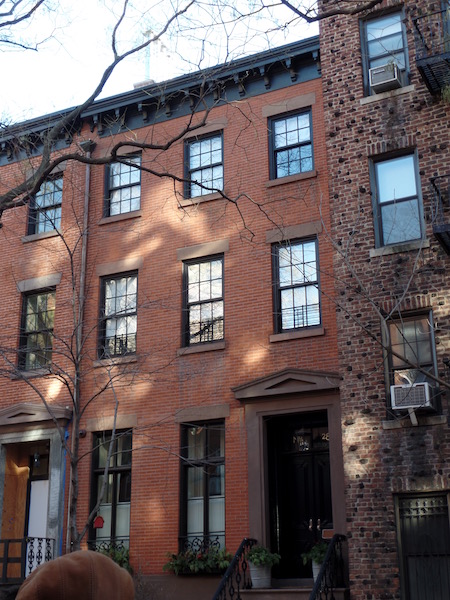
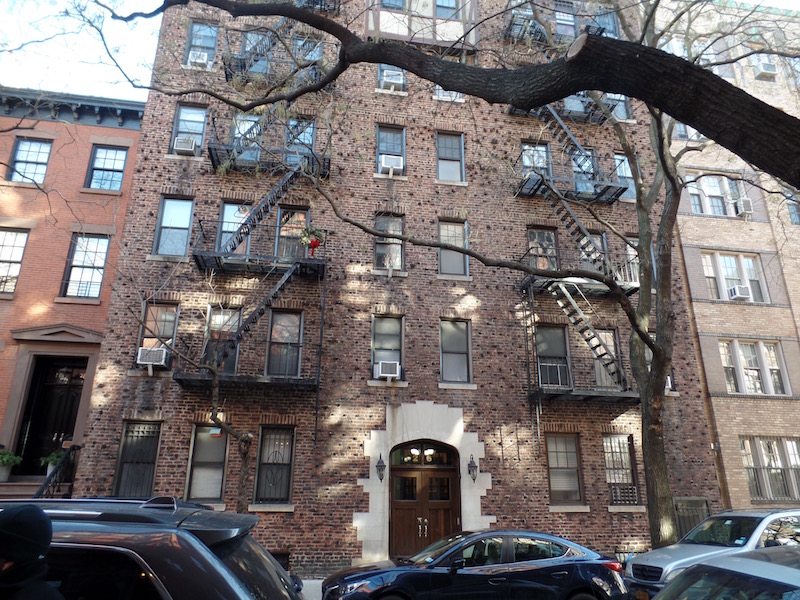
The house at 17 Grove Street, on the corner of Grove & Bedford Streets, is this lovely wood frame house. Because of NYC fire codes, it’s rare to find wooden houses anywhere in Manhattan, but No. 17 Grove Street has survived in near-pristine condition. Built in 1822, it was originally only two stories high and gained it’s top floor in 1870, which is presumably when it’s Italianate-style cornice was added. The original owner, William F. Hyde, was a sash maker and likely made many of the house’s double-hung windows.
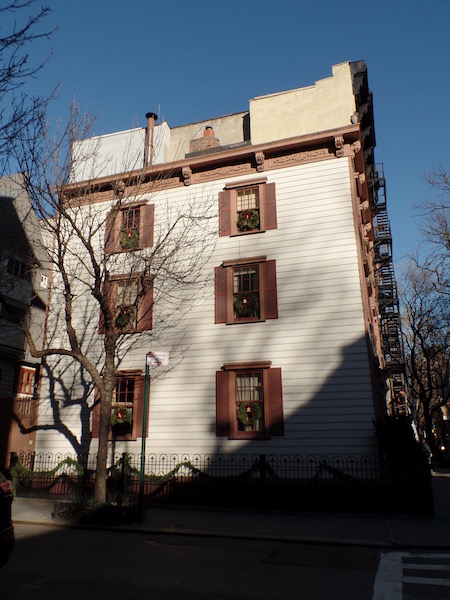
Grove Court was an interesting little place ... an alley hidden between 10 and 12 Grove Street. It is an area behind the buildings lining Grove Street full of six townhouses. Built in 1853-1854, the townhouses were constructed as “backhouses,” according to Walking Gotham. The poor did indeed take residence in the area, leading to the nickname of “mixed Ale Alley,” after the cheap liquor the inhabitants drank. Today, these houses are some of the more idyllic housing in the city, allowing their residents to escape the bustle of the city, while living in the heart of the Village.
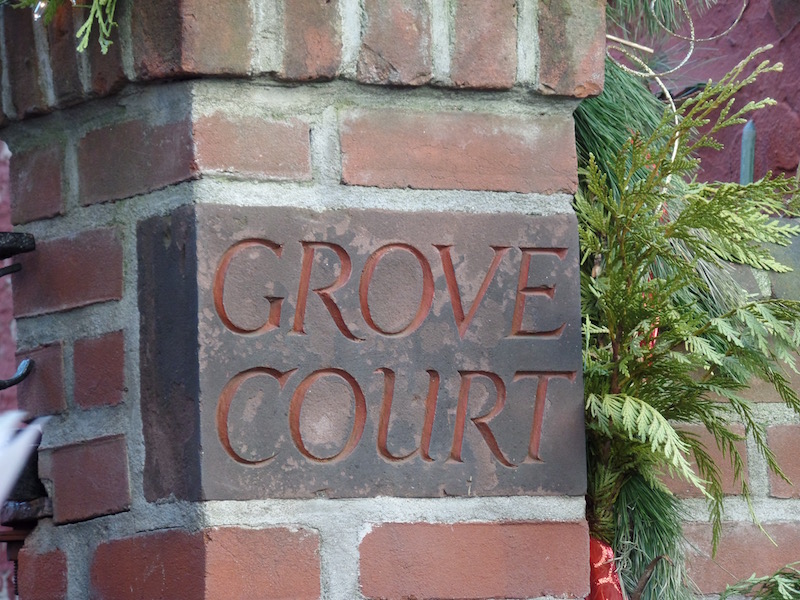
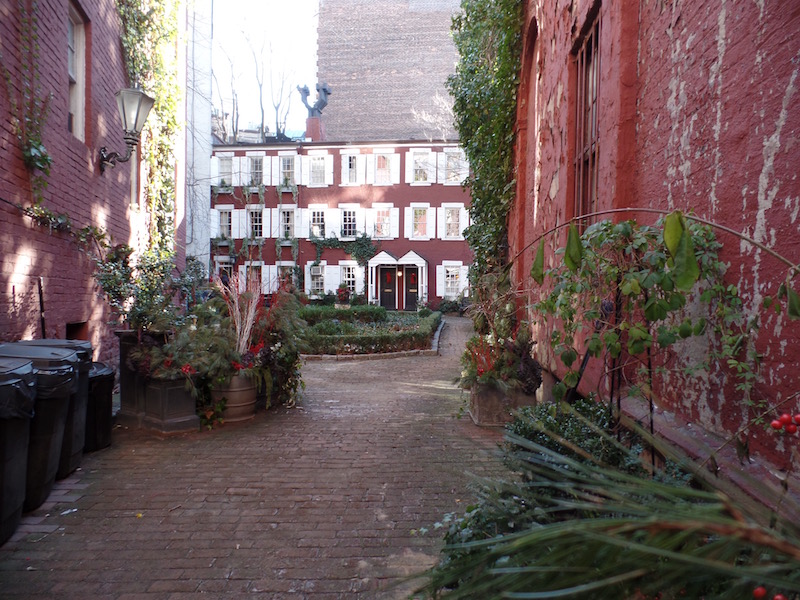
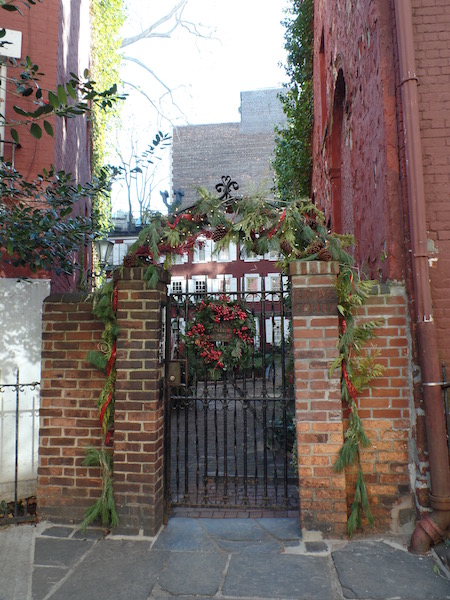
The Church of St. Luke in the Fields is an Episcopal church, constructed in 1821-22 and has been attributed to both John Heath, the building contractor, and James N. Wells. The church was founded in 1820 on farmland donated by Trinity Church, to accommodate the expansion of New York City northward into Greenwich Village. The original church building was reminiscent of an English village church, with a square tower at one end, but made of brick and built in the Federal style. It was part of a complex laid out by Clement Clarke Moore, who would serve as the church's first pastor, which included adjoining stone row houses, which the church rented out. Greenwich Village at the time was a sanctuary for people fleeing the endemic diseases of the city proper, and the name of the new parish, St. Luke in the Fields, was chosen to evoke the pastoral quality of the area
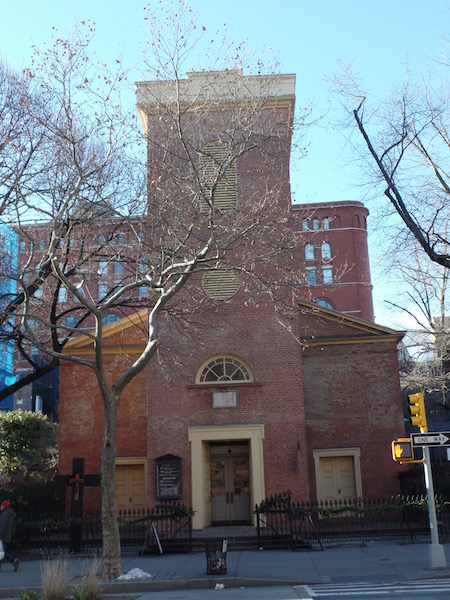
This was just an interesting alleyway :-)
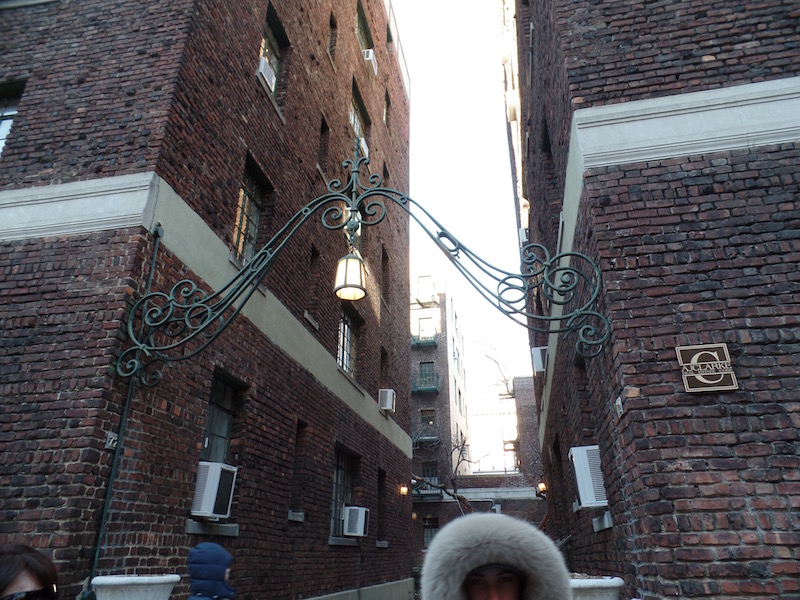
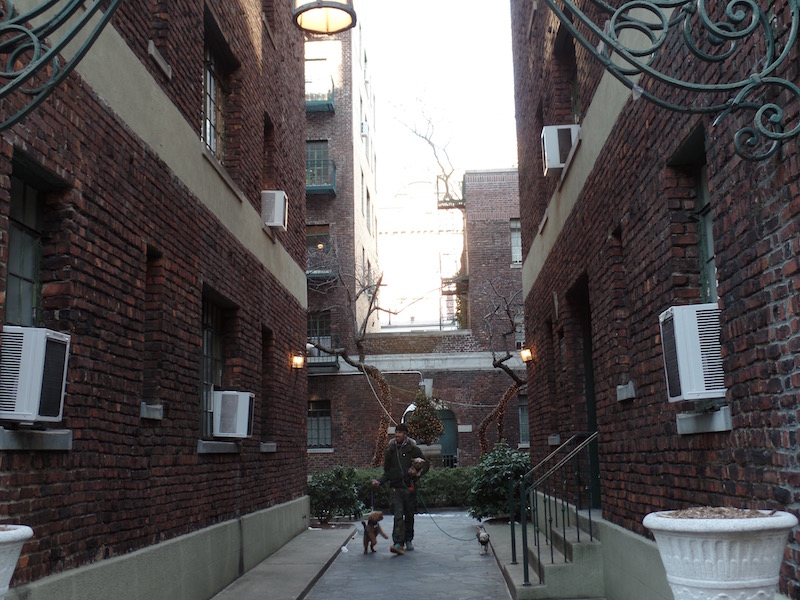
These are the "twins", two mirror-image free-standing houses at 39 and 41 Commerce Street. One story (although it is said not to be true), says that it was created by a sea captain with two feuding daughters. He built them matching houses joined by a walled garden with few windows on the garden sides so the sisters would not have to see one another. In fact the two houses were built as an investment in 1832 by a New Jersey milkman, Peter Huyler. Greenwich Village was growing quickly as businesses and banks moved north from Lower Manhattan to escape cholera and yellow fever epidemics in the early 1800s. In 1826 paving on Commerce Street was started. By the following year it extended to the point where Commerce curves into Barrow Street. At the curve a 72-foot nearly-rectangular plot was available for development.
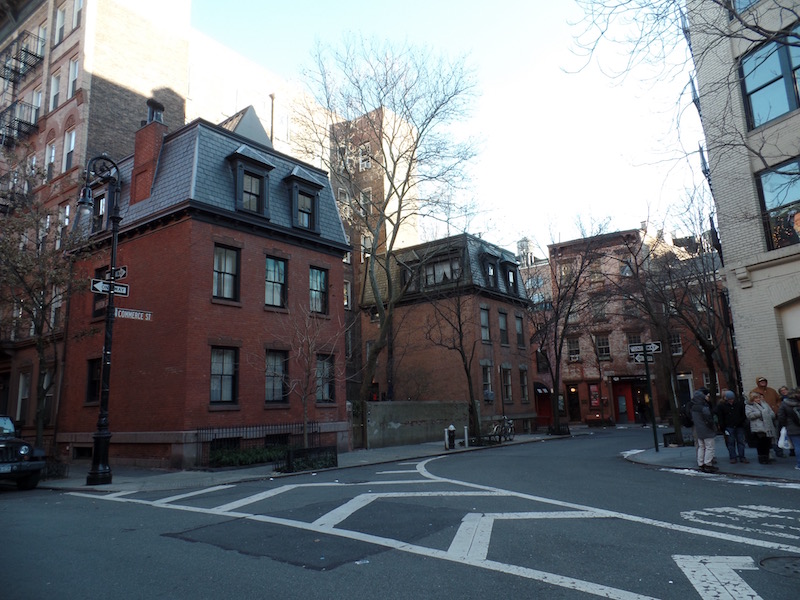
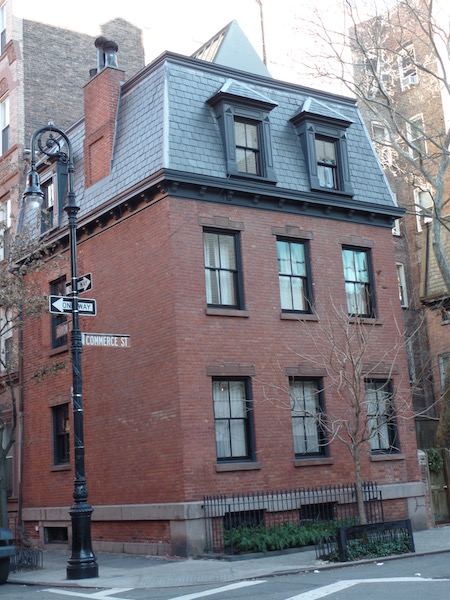
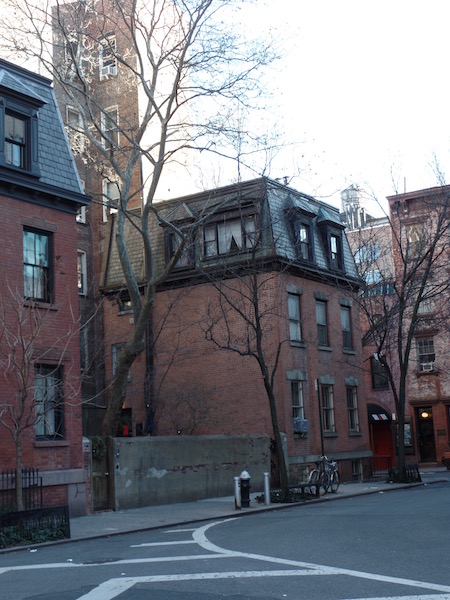
The Cherry Lane Theater, established in 1924, it is New York City's oldest continuously running Off-Broadway theater. A landmark in Greenwich Village’s cultural landscape, it was built as a farm silo in 1817, and also served as a tobacco warehouse and box factory before Edna St. Vincent Millay and other members of the Provincetown Players converted the structure into a theatre they christened the Cherry Lane Playhouse, which opened on March 24, 1924, with the play The Man Who Ate the Popomack.
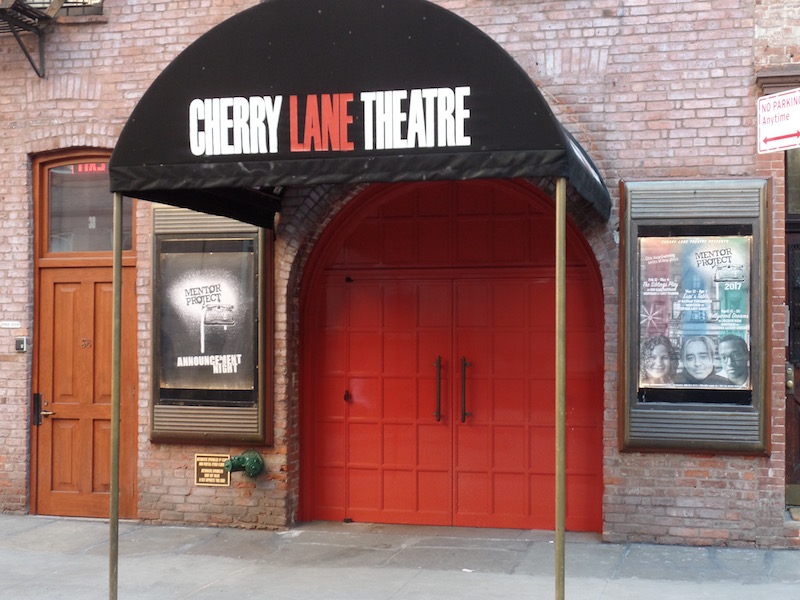
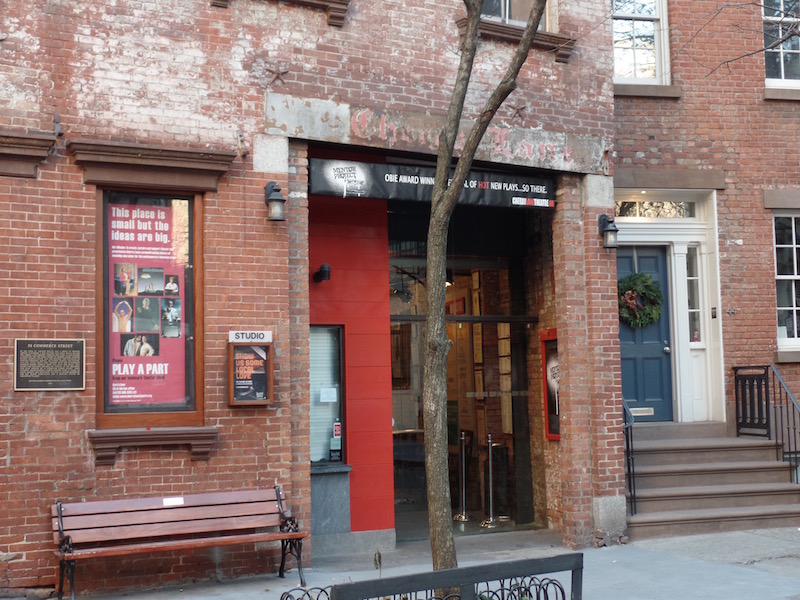
75 1/2 Bedford St, built in 1873, is only 9 feet 6 inches wide and is considered to be the narrowest house in New York. Edna St. Vincent Millay, the Pulitzer Prize winning poet and her new husband, coffee importer Eugen Jan Boissevain, lived in the house from 1923 to 1924.
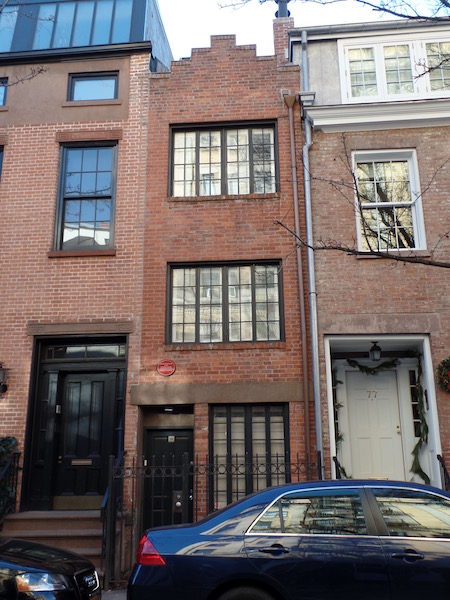
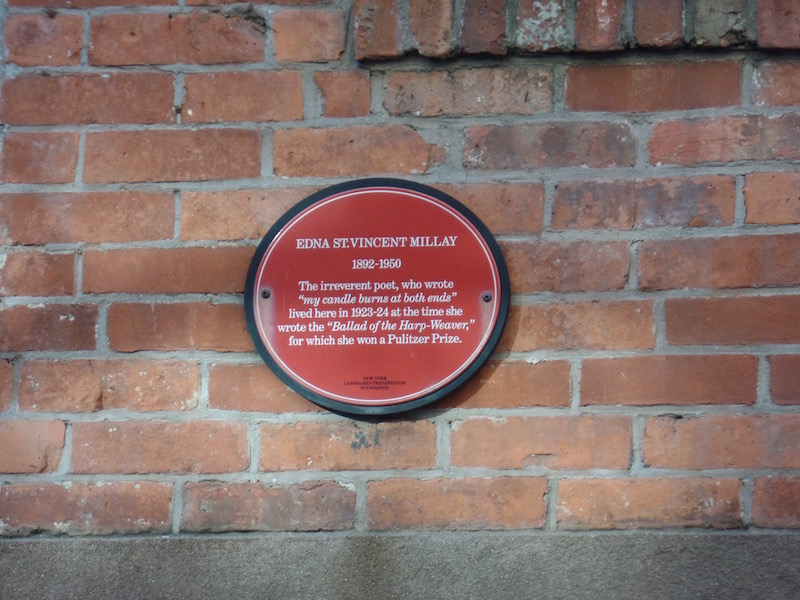
This was a bit odd... we were walking by and you can see where the land under this house has settled and the bricks and door frame is tilted.
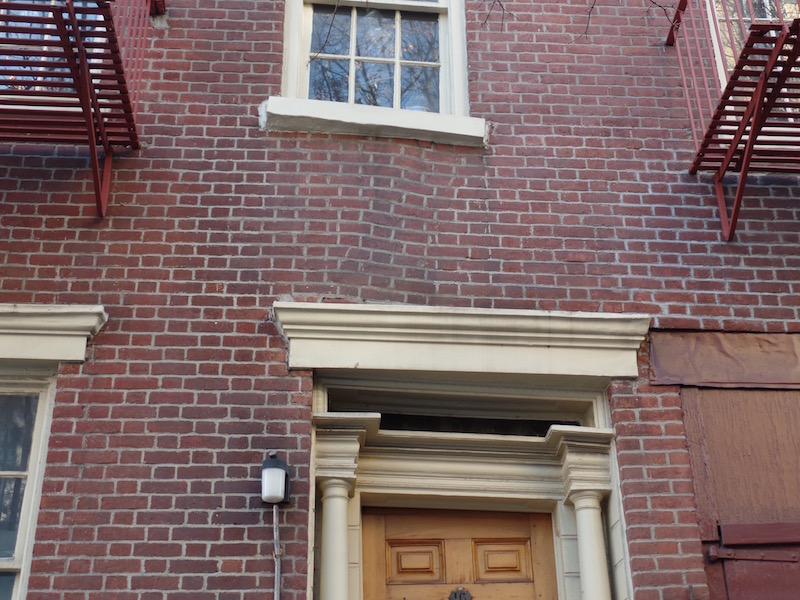
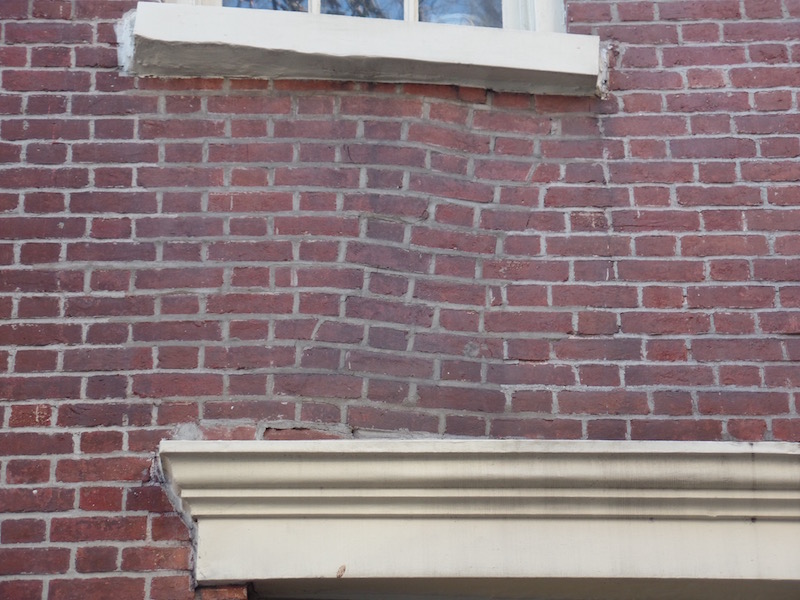
The house at 17 Commerce was built in 1830 by stonecutter Abraham Bogert and is only two floors in height (the ones around it are 2.5 or 3 stories). The building boasts its original stoop ironwork with pineapple-shaped finials. The building has a plaque identifying it as the 'Aaron Burr House' but while Burr lived in the nearby Richmond Hill mansion, he did not live here.
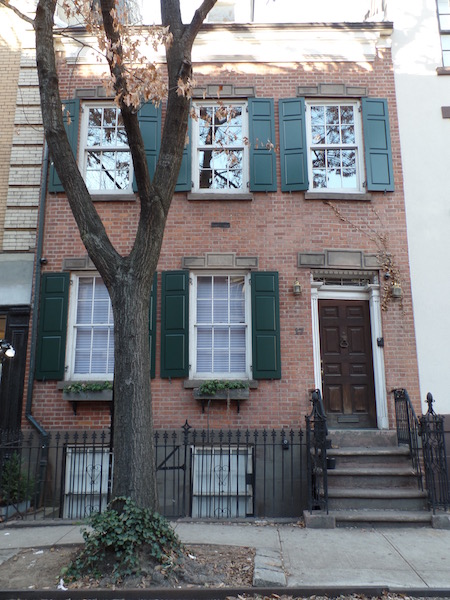
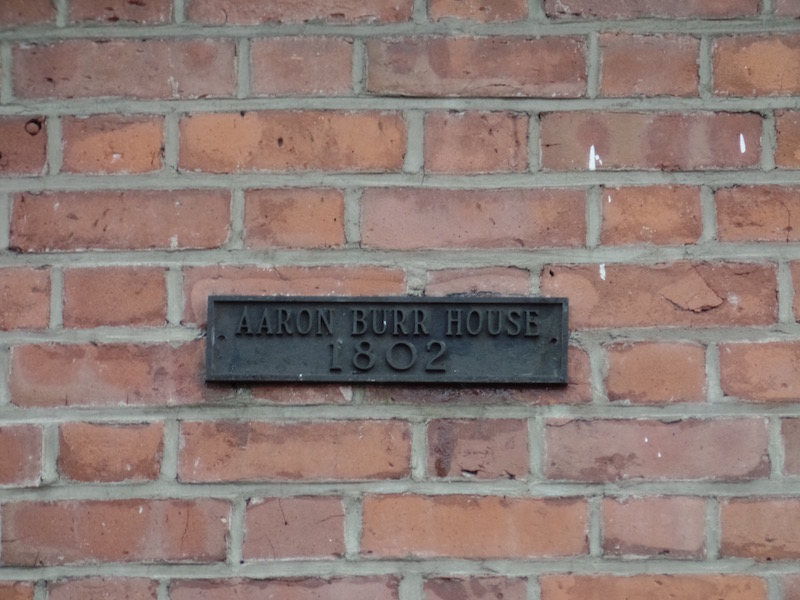
The Stonewall Inn is near a tiny park at Stonewall Place. The Village has maintained its role as a center for movements that have challenged the wider American culture, for example, its role in the gay liberation movement. The Stonewall riots were a series of spontaneous, violent demonstrations by members of the gay community against a police raid that took place in the early morning hours of June 28, 1969, at the Stonewall Inn. They are widely considered to constitute the single most important event leading to the gay liberation movement and the modern fight for LGBT rights in the United States. On June 23, 2015, the Stonewall Inn was the first landmark in New York City to be recognized by the New York City Landmarks Preservation Commission on the basis of its status in LGBT history, and on June 24, 2016, the Stonewall National Monument was named the first U.S. National Monument dedicated to the LGBTQ-rights movement.
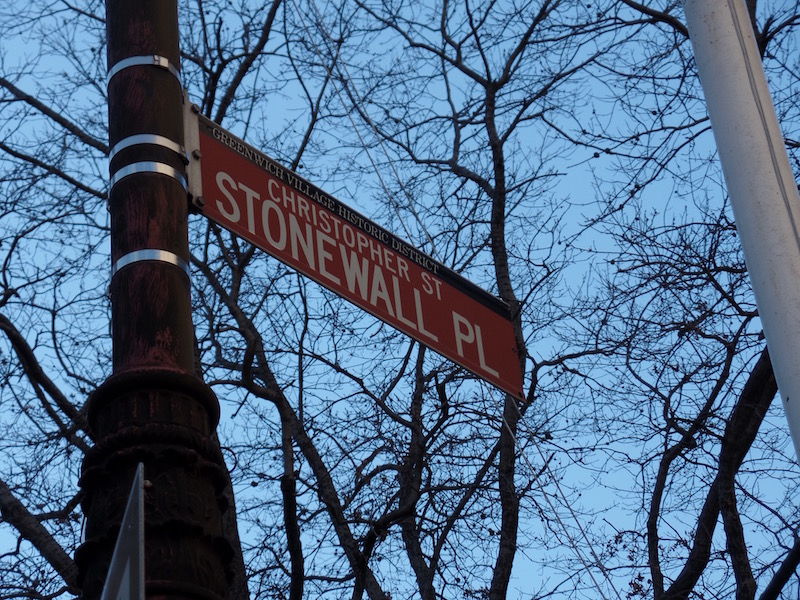
We then walked over towards the Washington Square Park and NYU territory. If you've read my NYC blogs before, you've probably seen these same pictures, since they are of lovely Greek Revival rowhouses that are on one side of the park. The Washington Square Arch was built in 1892 in Washington Square Park and celebrates the centennial of George Washington's inauguration as President of the United States in 1789. It is 77 feet high and is modeled on the Arc de Triomphe in Paris.
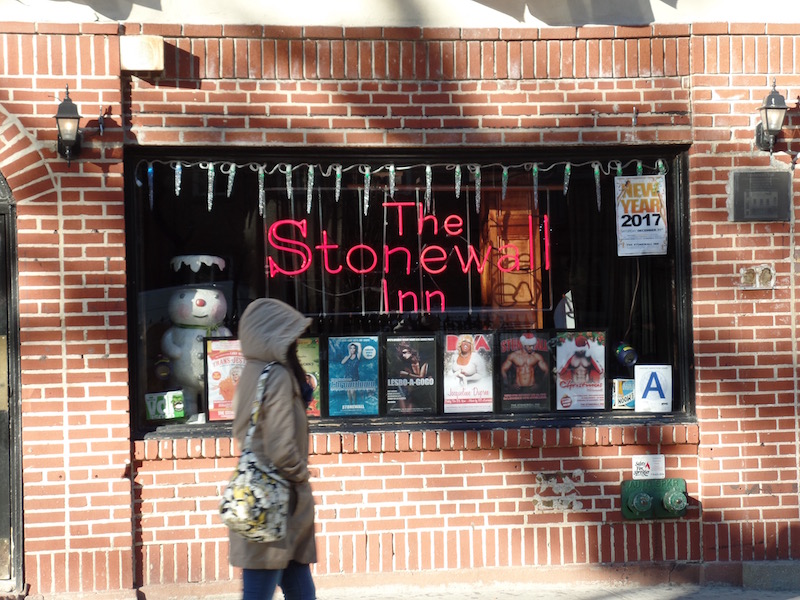
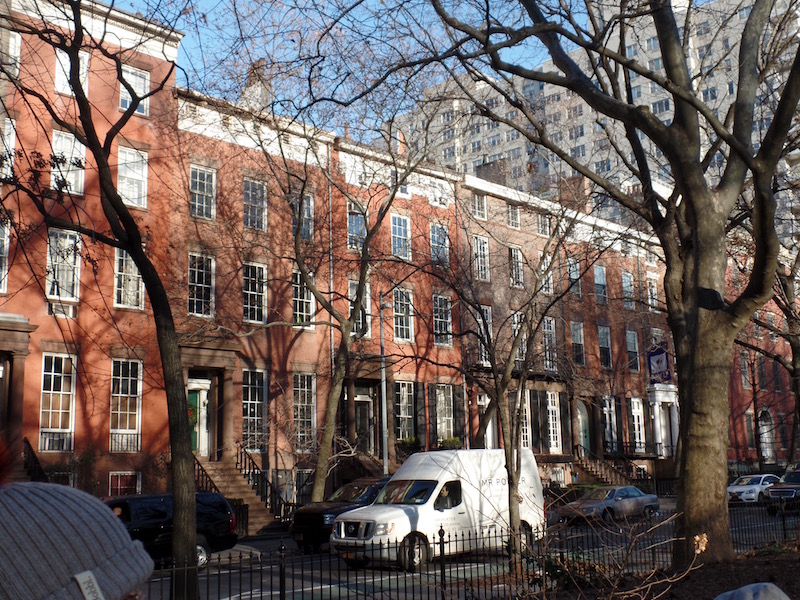
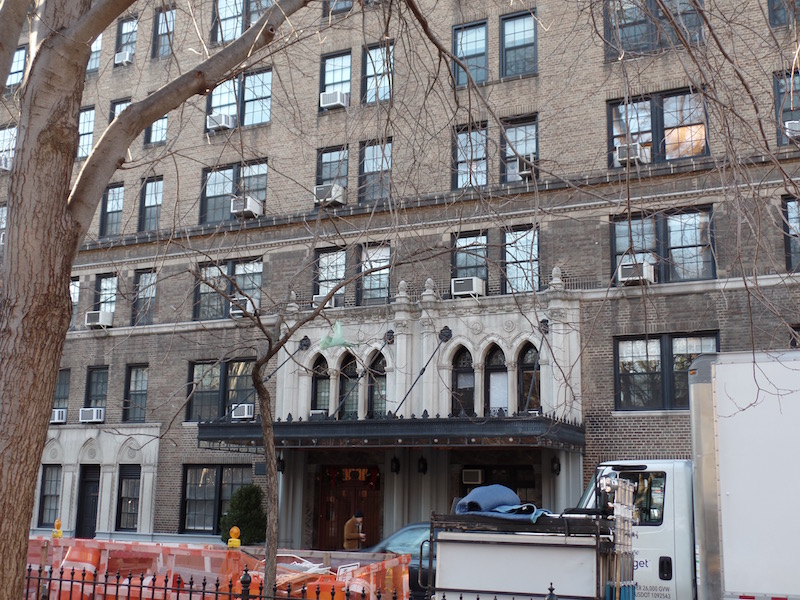
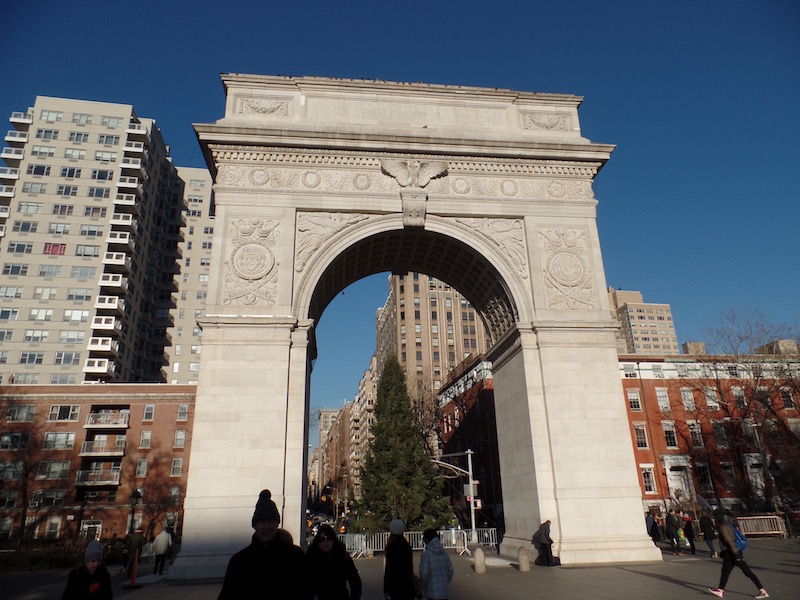
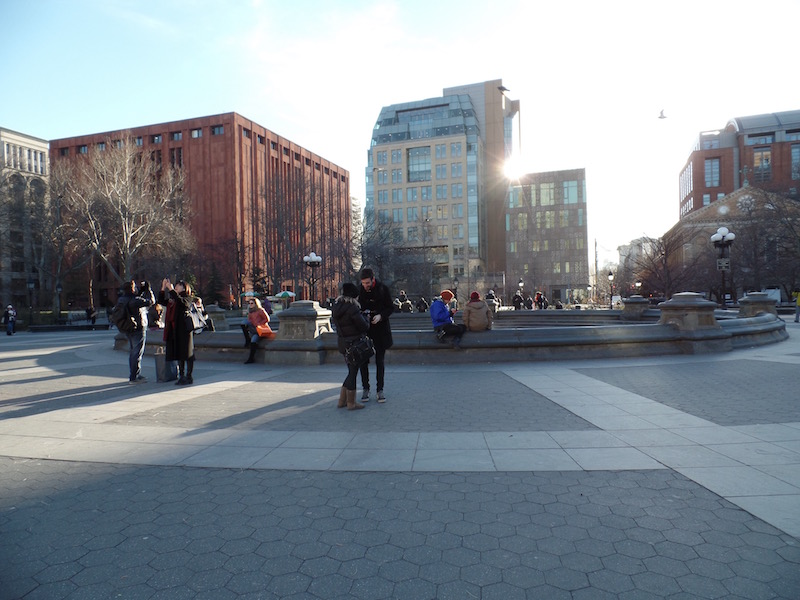
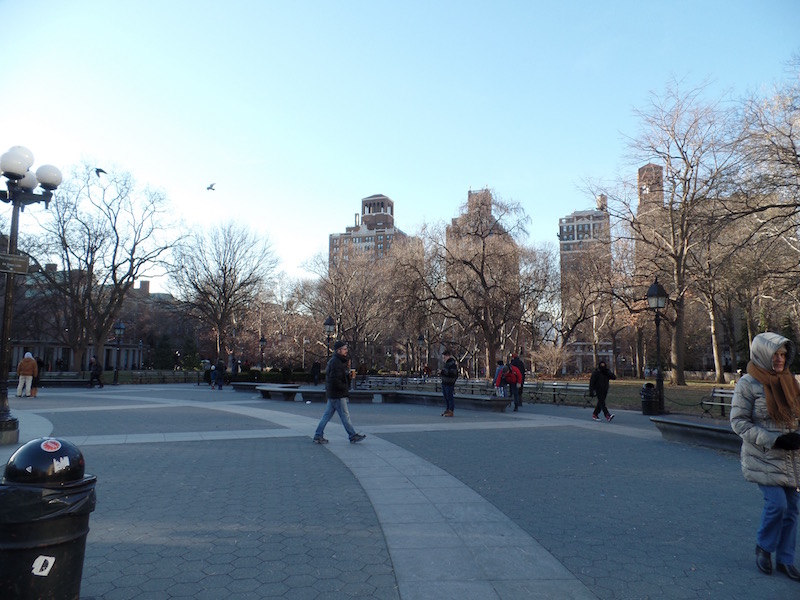
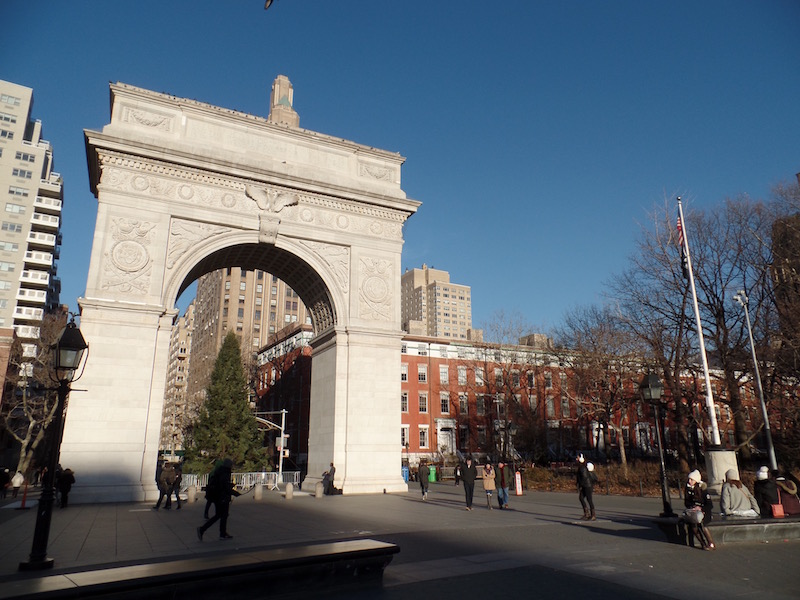
High Line Park is a 1.45 mile long linear park built on an elevated section of a railway line that is no longer used. It was inspired by the 3-mile Promenade plantée (tree-lined walkway), a similar project in Paris completed in 1993. The High Line viaduct, then a portion of the New York Central Railroad's West Side Line, opened to trains in 1934. It originally ran from 34th Street to St. John's Park Terminal at Spring Street, and was designed to go through the center of blocks rather than over the avenue. It connected directly to factories and warehouses, allowing trains to load and unload their cargo inside buildings. Milk, meat, produce, and raw and manufactured goods could be transported and unloaded without disturbing traffic on the streets. There was a set of Christmas carolers as we walked the length of the park.
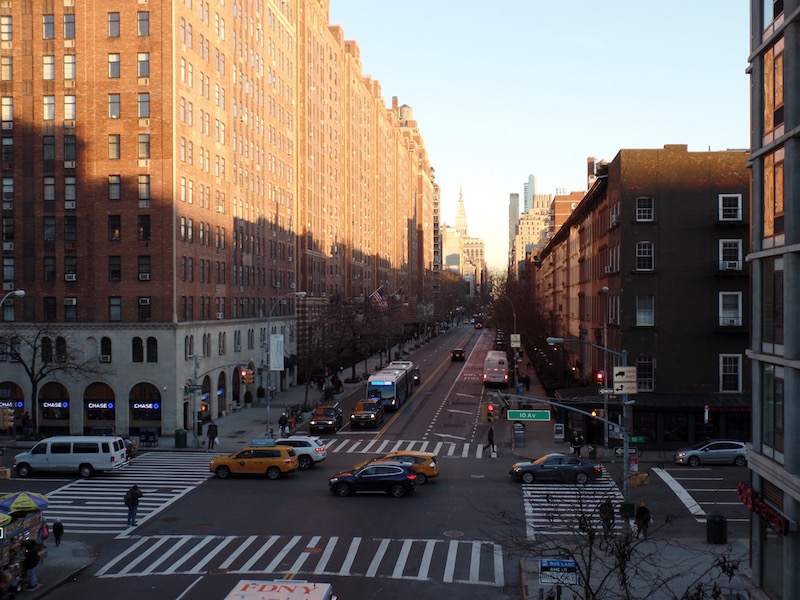
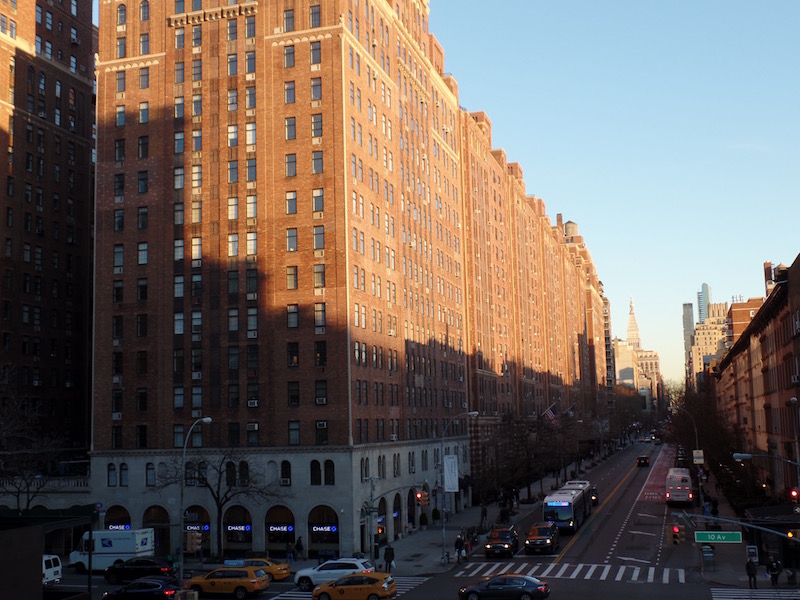
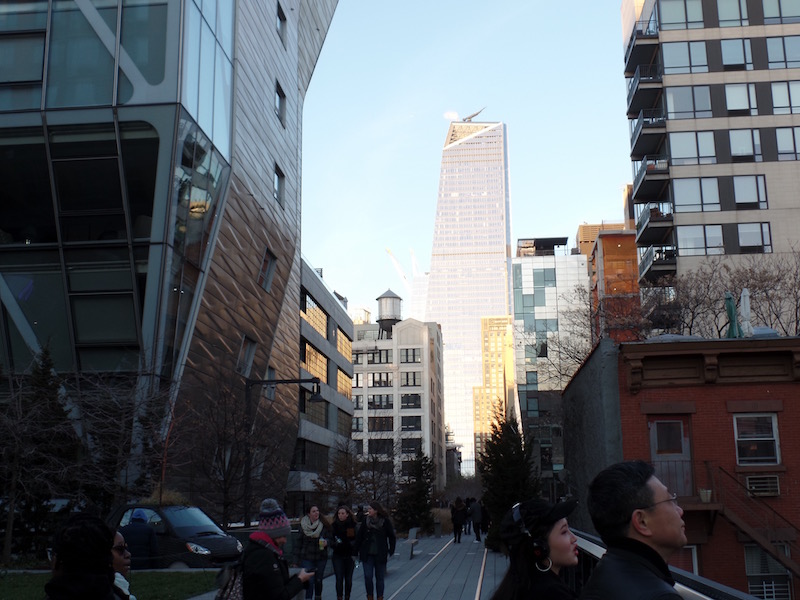
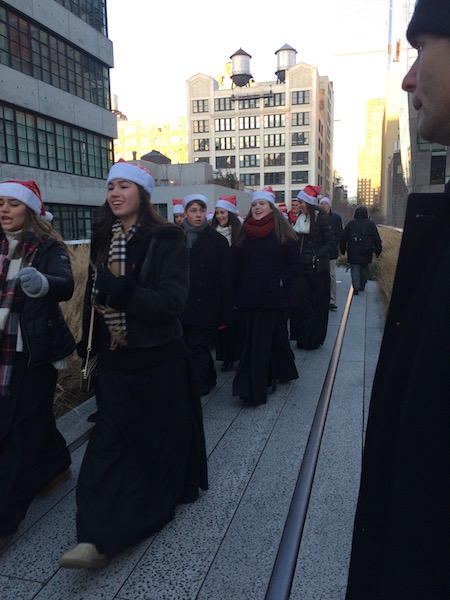

This was my birthday (yes, our birthday's are a day apart) and we went to the Strip House. It is actually a chain (which we normally attempt to avoid). The interior was designed by David Rockwell of the Rockwell Group and features a collection of Studio Manasse portraits of burlesque stars from the 1920s. This pictures aren't the best as I still haven't figured out the best way to handle low-light conditions.
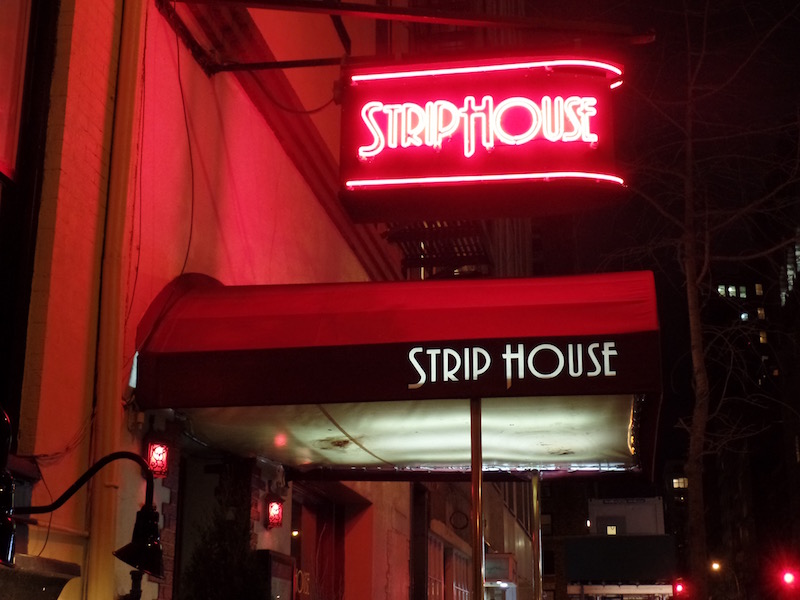
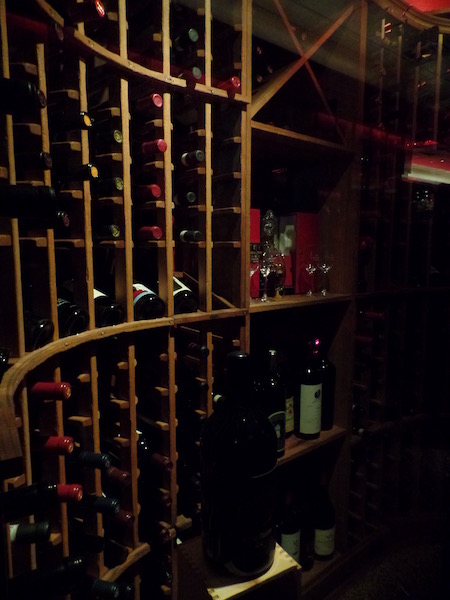
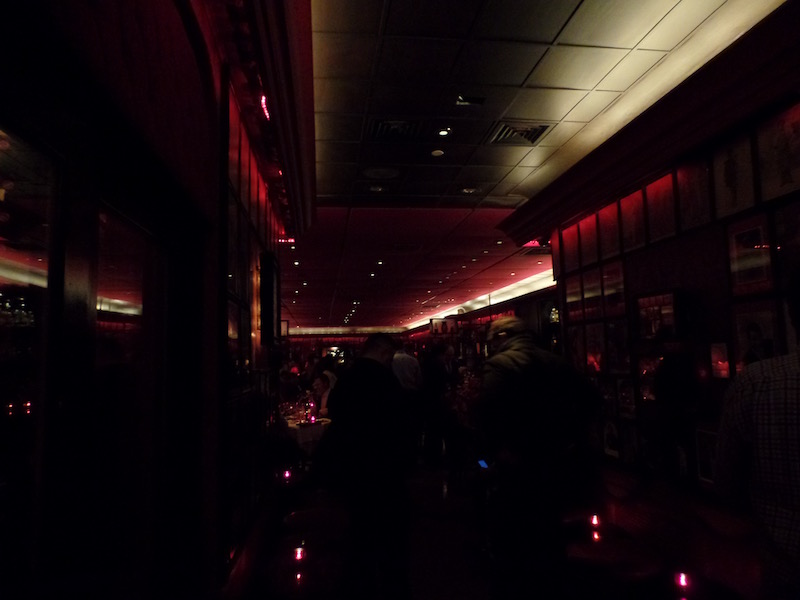
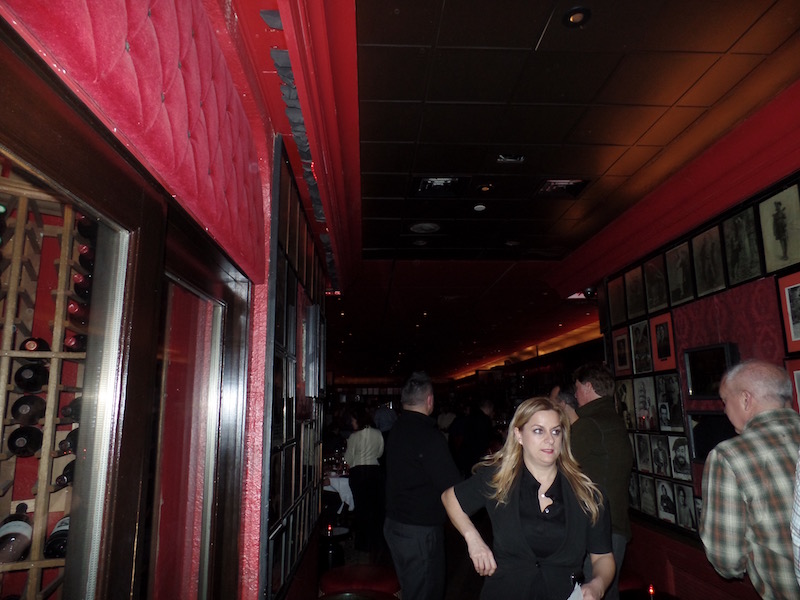
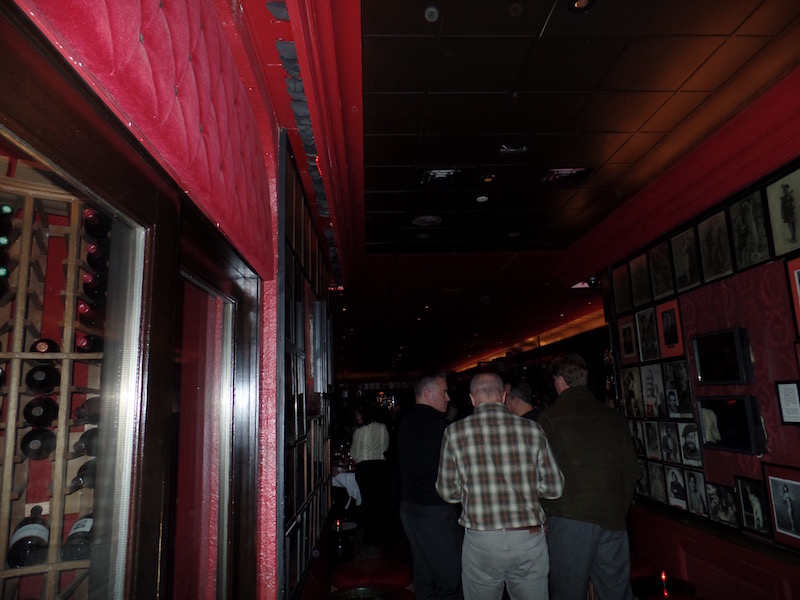
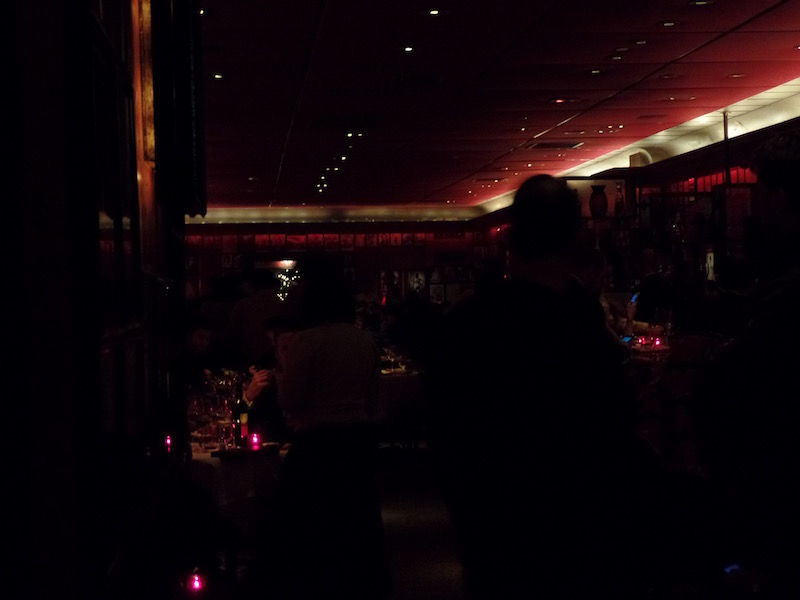
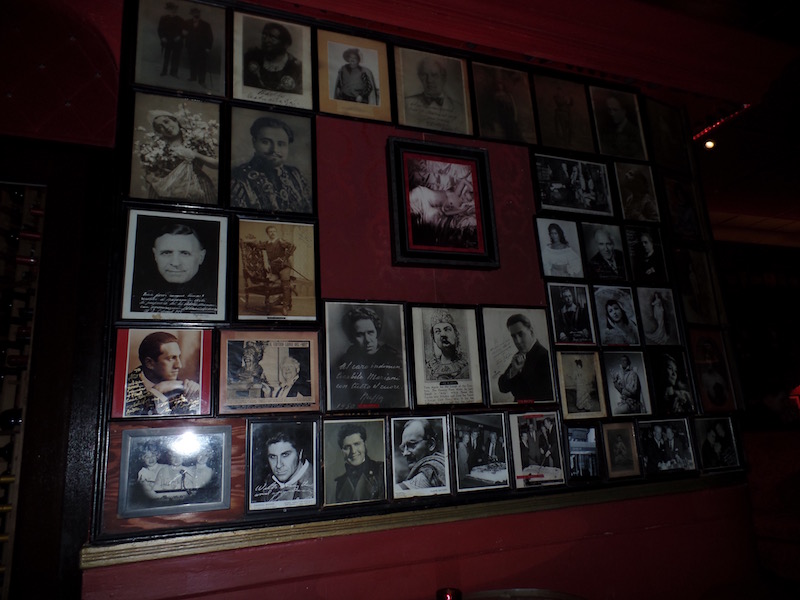
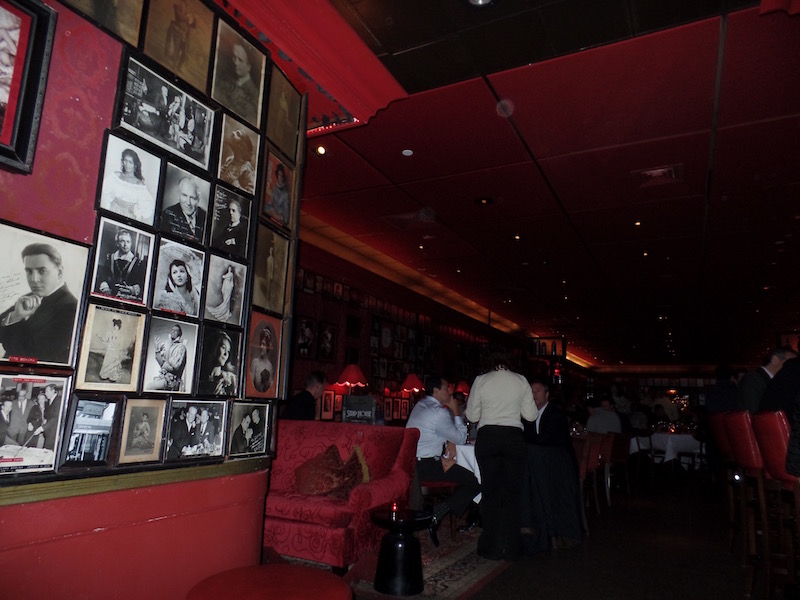
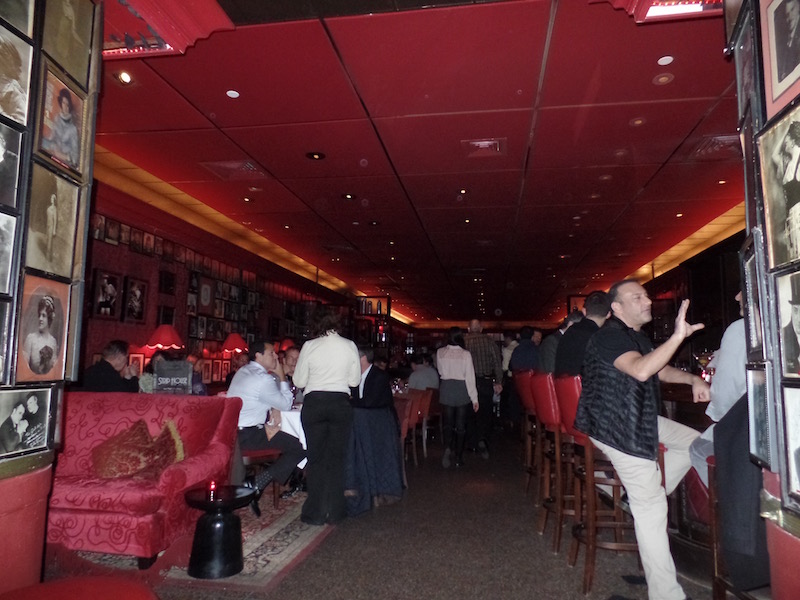
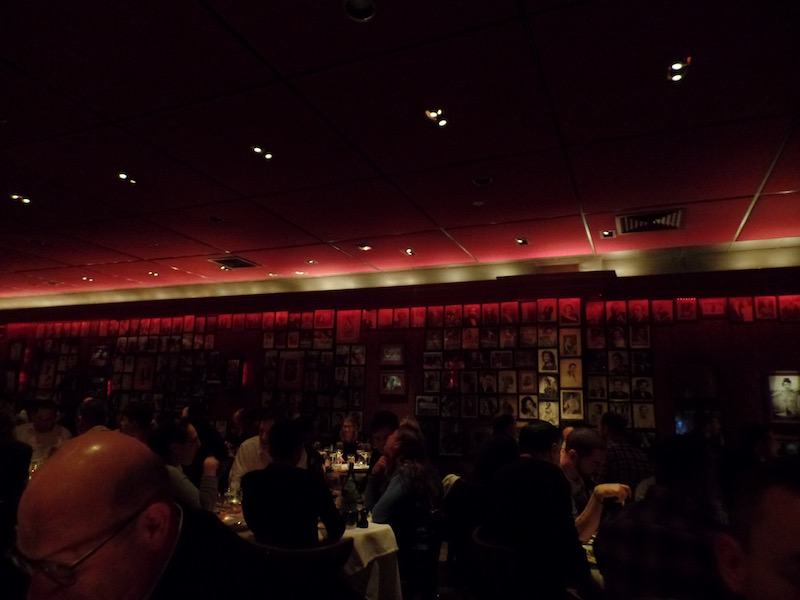
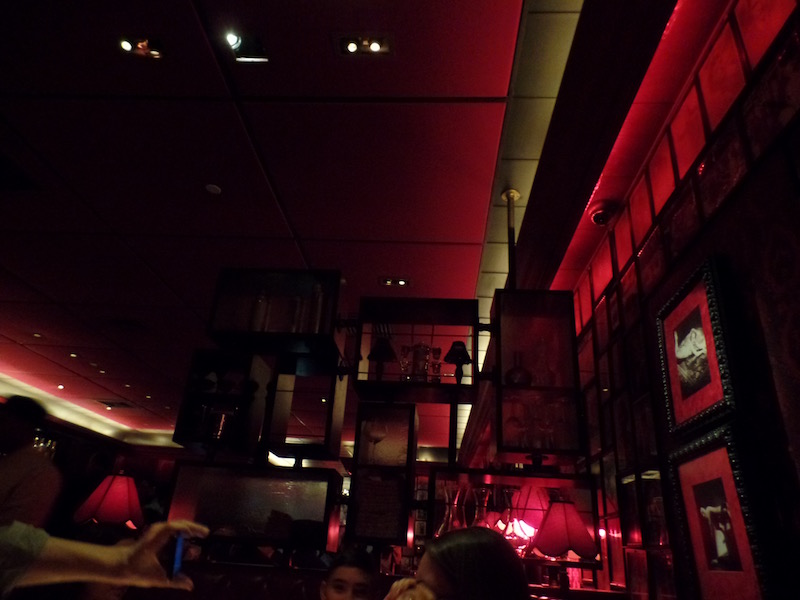
We went with the obvious choice of steak ... The butter and bread came first, with the Strip House logo on top (or we think it is the logo). Then we started with the jumbo shrimp cocktail (which really didn't have enough shrimp for my liking) and then came the steaks. They had just the right amount of sear on the outside and came with roasted garlic. For our side, we ordered the goose-fat potatoes, which came in a little "lump".
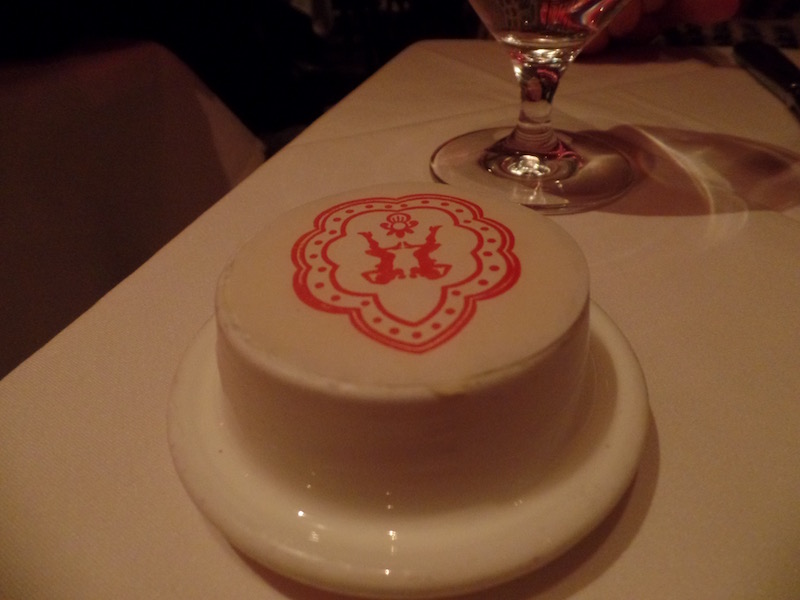
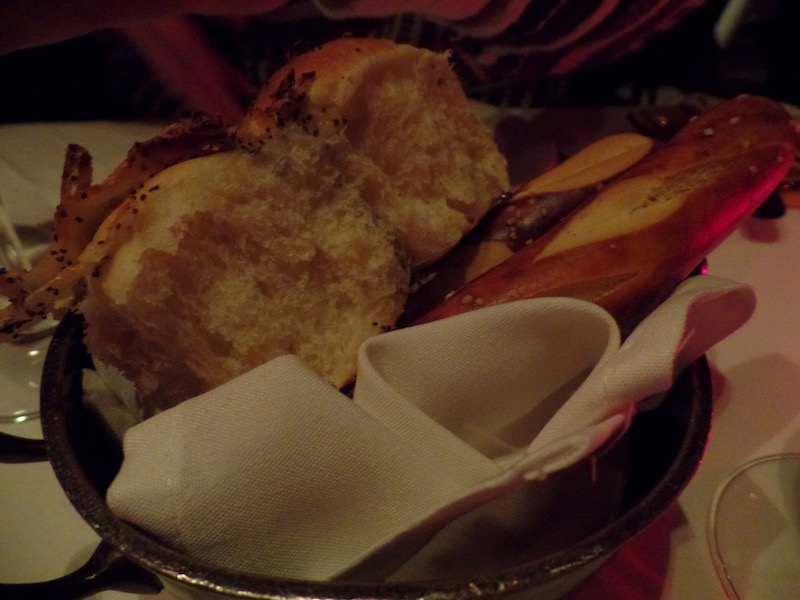
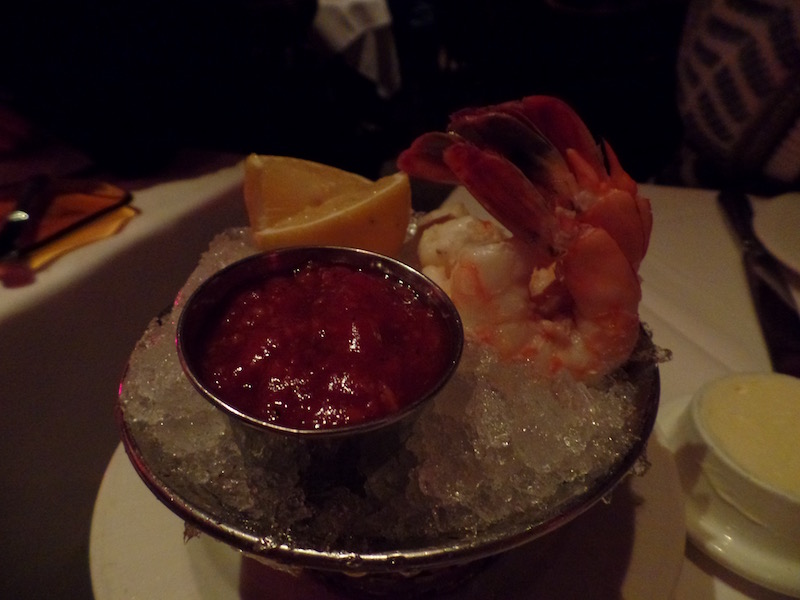
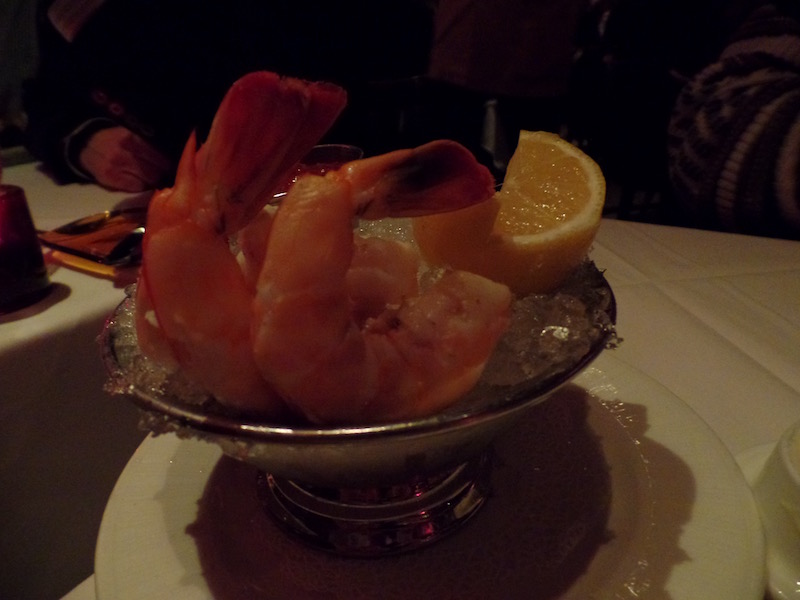
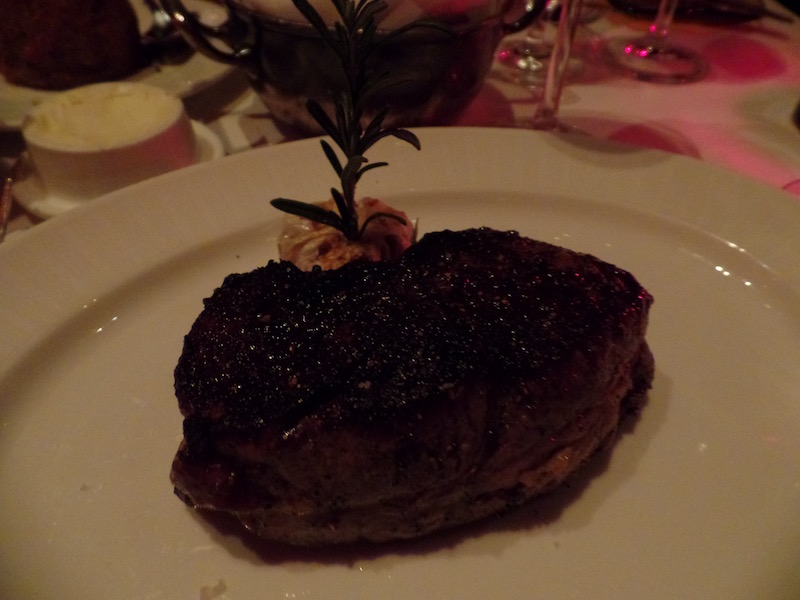
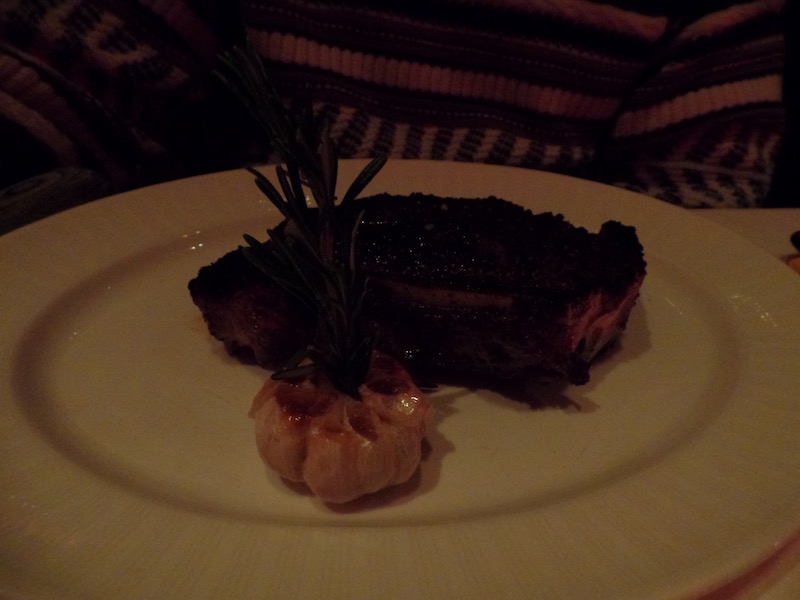
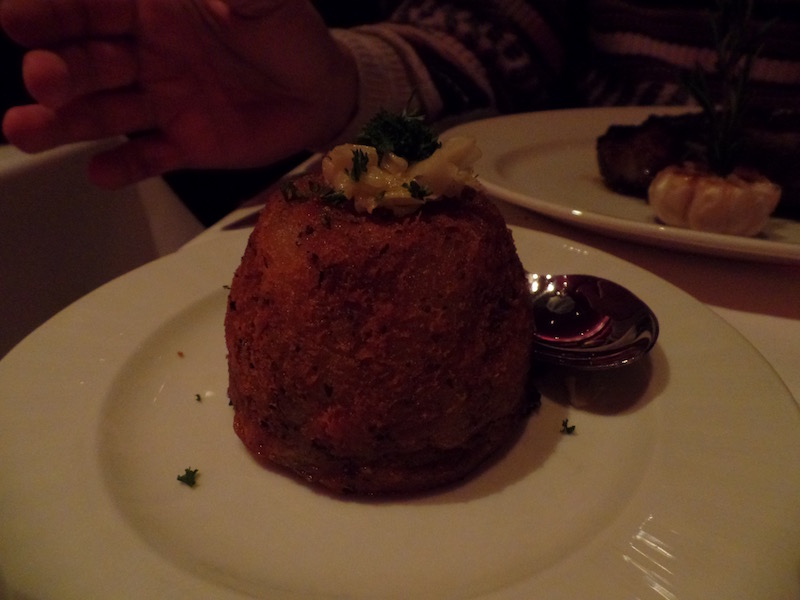
What steakhouse visit would not be complete without cheesecake! The 21-layer chocolate cake was recommended, but the table next to us had it and it was HUGE (and huge is actually an understatement) and so we opted for something smaller!
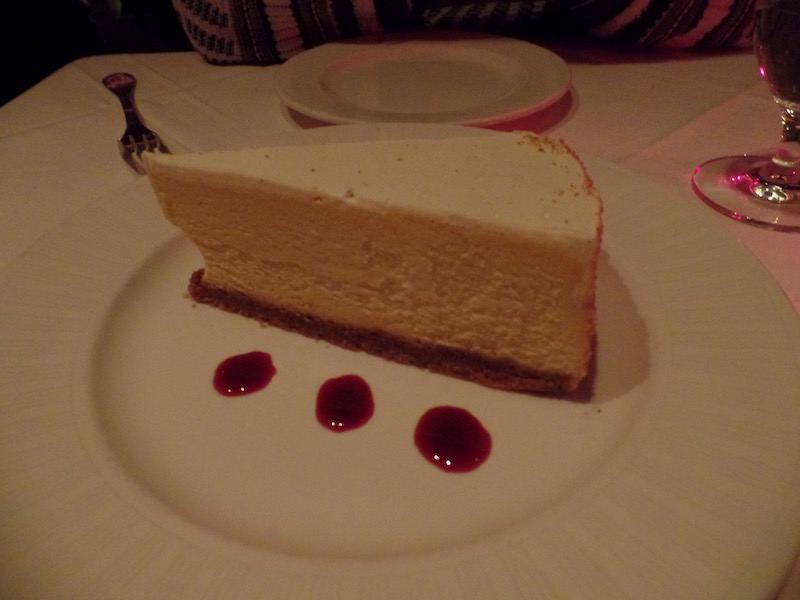
Proceed to NYC Day 4